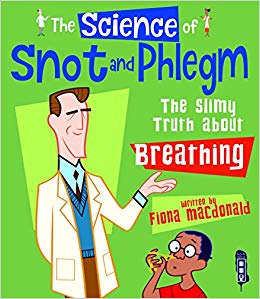-
Living and Nonliving
Angela Royston
Library Binding (Heinemann, July 26, 2008)Readers will learn the differences between living and nonliving. The book explores how living things move, use their senses, eat and breathe, as well as how objects can be made from nonliving materials. Each book in the ‘My World of Science’ series explains science that you see in the world around you and use every day. P
P
-
The Science of a Bicycle: The Science of Forces
Ian Graham, Debra Voege
Library Binding (Gareth Stevens Pub Learning library, Jan. 1, 2009)An innovative series with engaging sidebars, colorful photography, and labeled diagrams uses familiar, everyday objects to present science concepts such as sound, motion, states of matter, and other science curriculum topics. W
W
-
Science in Ancient Mesopotamia
Carol Moss
Library Binding (Franklin Watts, Sept. 1, 1998)Describes the enormous accomplishments of the Sumerians and Babylonians of ancient Mesopotamia in every scientific area, a heritage which affects our own everyday lives U
U
-
Plant Cycle
Samantha Bell, Jeff Bane
Library Binding (Cherry Lake Pub, Jan. 1, 2018)Using the new Next Generation Science Standards (NGSS), the My World of Science series provides the earliest readers with background on key STEM concepts. Plant Cycle explores the life cycle of plants in a simple, engaging way that will help readers develop word recognition and reading skills. Includes a glossary and index. M
M
-
The Science Of Snot & Phlegm: The Slimy Truth About Breathing
Fiona Macdonald
Hardcover (Book House, )None
-
Science in Ancient Greece
Kathlyn Gay
Library Binding (Franklin Watts, Sept. 1, 1998)Discusses the theories of ancient Greek philosopher-scientists such as Hippocrates, Aristotle, and Pythagoras U
U
-
States of Matter
Samantha Bell, Jeff Bane
Paperback (Cherry Lake Pub, Jan. 1, 2018)Using the new Next Generation Science Standards (NGSS), the My World of Science series provides the earliest readers with background on key STEM concepts. States of Matter explores basic chemistry and the states of solid, liquid, and gas in a simple, engaging way that will help readers develop word recognition and reading skills. Includes a glossary and index. WB
WB
-
Transparent and Opaque
Angela Royston
Library Binding (Heinemann, July 26, 2008)Readers will learn the difference between transparent, translucent, and opaque materials and see how each is used in everyday life. Each book in the ‘My World of Science’ series explains science that you see in the world around you and use every day. O
O
-
Magnets in the Real World
Chris Eboch
Paperback (Core Library, Jan. 1, 2013)Discusses how magnets work, shares examples of how they are used around the house, in transportation, and in medicine, and provides a brief history of the study of magnetism. X
X
-
The Science of a Guitar: The Science of Sound
Anna Claybourne, Debra Voege
Library Binding (Gareth Stevens Publishing, Jan. 1, 2009)Do you want to be a guitar hero? Just brush up on your rock-it science! Find out how your ears change music into a message your brain can understand. The Science of a Guitar fine-tunes the science of sound, from vibrations to volume and from sound waves to scales. W
W
-
Color and Wavelengths
Samantha Bell, Jeff Bane
Paperback (Cherry Lake Pub, Jan. 1, 2018)Using the new Next Generation Science Standards (NGSS), the My World of Science series provides the earliest readers with background on key STEM concepts. Color and Wavelengths explores the different frequencies in light wavelengths in a simple, engaging way that will help readers develop word recognition and reading skills. Includes a glossary and index. I
I
